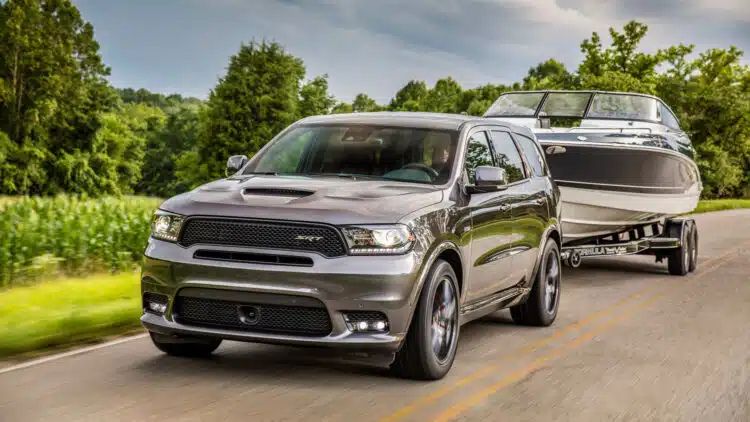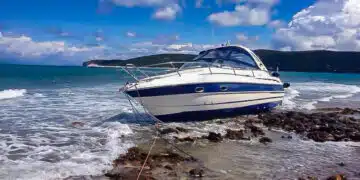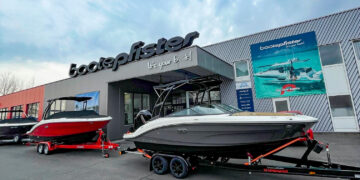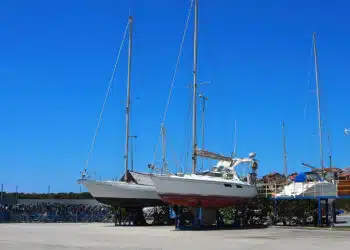The new boating season has long since begun. Many owners trailer their floating vessel themselves to the mooring or to their vacation destination. This has many advantages, for example, you are much more flexible when planning your trip. But before the boat is loaded piggyback onto the trailer and hitched up, the trailer captain should familiarize himself with the special features of trailer driving. SeaHelp shows what is important.
Who wants to put his boat piggyback on a trailer and drive off with it, should deal beforehand with the peculiarities of the trailer driving. Otherwise, damage to the boat and the equipment, fines or in the worst case even an accident threatens.
Trailer driving is actually quite simple if a few things are taken into account. First of all, the trailer and the boat have to fit together. Anyone who already owns a boat and is planning to buy a trailer is well advised to buy one size larger if in doubt, because: due to accessories and equipment, boats usually weigh more than stated in the sales brochure.
The permissible axle loads must not be exceeded, information can be found in the vehicle documents
The legislator has set maximum permissible axle loads for towing vehicles and trailers, to be read in the respective vehicle documents. These axle loads must not be exceeded under any circumstances. When a trailer is coupled, it must be taken into account that the tongue load of the trailer is added to the payload of the (passenger car) towing vehicle – and thus to the axle load of the rear axle.
Also, the maximum trailer load for passenger cars has been precisely defined by the legislator; it is limited to the maximum permissible total weight for passenger cars and to 1.5 times the permissible total weight for off-road vehicles, but to a maximum of 3.5 tons. Attention: the trailer support load cannot be accounted for here. What trailer load a vehicle is actually allowed to tow is determined by the car manufacturer, this is noted in the registration certificate, Part I.
Quite simply, you can measure the drawbar load with a bathroom scale and a square timber
Speaking of drawbar load: often a drawbar load of maximum 50 to 100 kg, but a minimum of 20 percent of it, is permitted. Tip: who exhausts the drawbar load, reduces the risk of swaying while driving. The drawbar load can be measured by placing a wooden beam on a scale and positioning the uncoupled trailer coupling head on it.
Further limitations for trailers result from the maximum height of the trailer and yacht, which may not exceed four meters. The car and trailer together may not exceed 18 meters in length, and the maximum width of the trailer and yacht may be 2.55 meters (EU), otherwise 2.50 meters. Wes trailer (including yacht) is wider, requires a special permit.

With detachable trailer hitches, care should be taken to ensure proper locking
Up to 3.5 t towing capacity, the trailer couplings are designed as ball heads, above that a so-called jaw coupling must be used. Ball-head couplings are available in permanently mounted and detachable versions. Who installs a removable coupling, should absolutely make sure that this is correctly locked – otherwise the trailer makes itself if necessary when driving.
If you have an older trailer with a 7-pin trailer plug, may need an adapter for the towing vehicle with a 13-pin system (or vice versa); these are available in accessories stores and in well-stocked hardware stores.
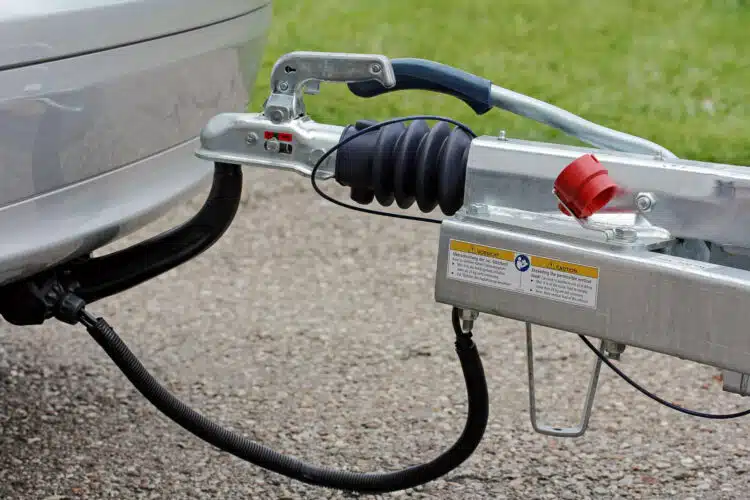
Proper tie-downs help prevent slippage and press the boat down onto the trailer
Correct lashing of the load is important when trailering. It should ensure that the boat is firmly pressed down onto the trailer on the one hand, and that it cannot slip in either the transverse or longitudinal direction on the other. For load securing, additional diagonal lashings to the front and rear are required to prevent the load from slipping when accelerating or braking the rig.
Incidentally, according to an expert report by the Transport-Information Service of the German Insurance Association, the most frequent trailer accidents occur due to defective tires; frequent causes of damage here are underinflated tires or overaged tires.

The biggest risk of damage to trailers is theft; this can be prevented
Excessive trailer weight, excessive speed, faulty lashing or load distribution are also cited as reasons for accidents; in addition, an incorrect reaction on the part of the driver, for example when lurching, could cause an accident (in this case, the brakes should only be applied carefully).
According to the expert report, however, the qualitatively highest risk of damage is the risk of theft. Trailers with boats parked overnight, or even over a longer period of time, are a sought-after object for theft, especially since it is often made very easy for the thieves, it says.

Coupling locks, wheel claws and metal chains can be considered as anti-theft devices
In addition to a coupling lock, wheel claws (similar to the so-called parking claws) or chains with which the rims are secured against turning – or the entire trailer can be fixed to another fixed object – can also be considered as anti-theft devices. Often ridiculed – but according to the expert opinion “undoubtedly effective” is also the dismantling of a wheel.
Essential for the theft risk is however in particular also the selected parking place, which should be ideally on a guarded area.
Also at the slip ramp the team driver should consider some things, often the bilge plug is forgotten when watering
Who so armed with his boat trailer without problems reaches the slip ramp, can now einslippen. It should not be forgotten to unplug beforehand the plugs trailer-car + plug light bar and remove the light bar and the propeller guard. The boat on the trailer should be secured with lines, the bilge plugs should be closed.
Now the boat can be put away and made ready to drive (main switch, fuel tap, key, quick stop) before driving the trailer into the water. Attention: the towing vehicle should be additionally secured by rubber wedges on steep, slippery ramps.
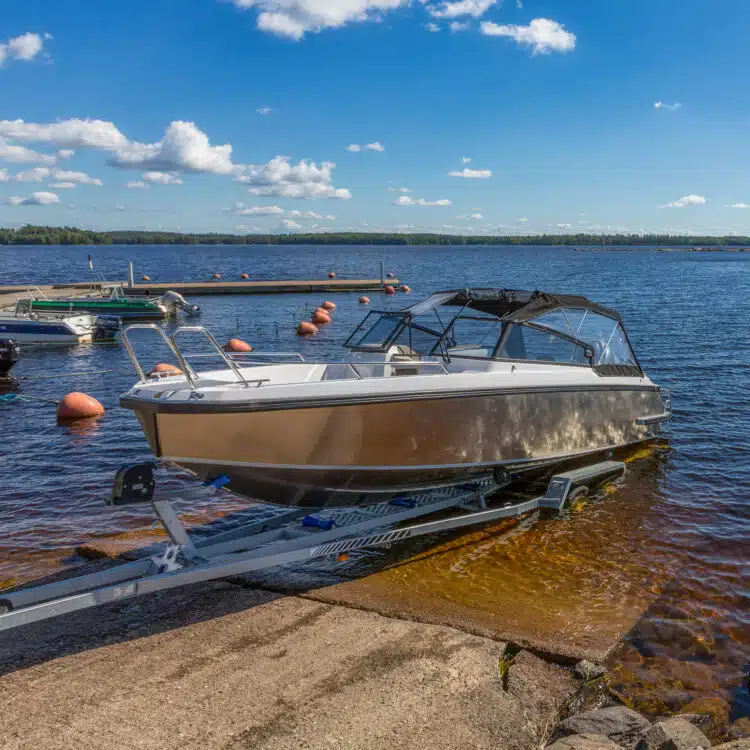
Click here for Part 2 of the article “Trailing, but properly“


